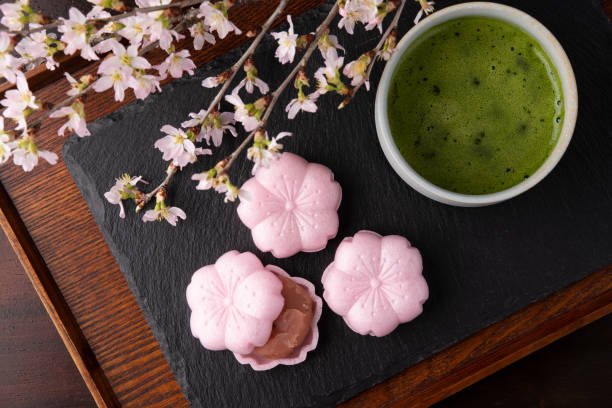Explore Japan’s unique desserts, from chewy mochi to rich matcha delights, and discover the sweet side of Japanese cuisine.
Introduction:
Japanese desserts offer a delightful blend of tradition, artistry, and flavor. From the chewy texture of mochi to the refined taste of matcha-based sweets, these treats have captivated dessert lovers worldwide. This guide explores some of Japan’s most beloved confections, their cultural significance, and where to find the best sweet experiences in Japan.
1. Mochi
Mochi is one of Japan’s most iconic desserts, made from glutinous rice pounded into a soft, chewy texture. It is often filled with sweet red bean paste (anko) or other flavorful ingredients. Popular variations include:
- Daifuku: Mochi stuffed with sweet fillings such as anko or strawberries.
- Warabi Mochi: A jelly-like mochi made from bracken starch and covered in soybean flour.
- Sakura Mochi: A springtime delicacy wrapped in a pickled cherry blossom leaf.

2. Matcha Sweets
Matcha, finely ground green tea powder, is a staple in Japanese desserts. Its slightly bitter yet aromatic flavor pairs well with sweet ingredients. Some popular matcha-based treats include:
- Matcha Ice Cream: A refreshing, creamy dessert loved by locals and tourists alike.
- Matcha Dorayaki: Pancakes filled with matcha-flavored anko.
- Matcha Parfaits: Layered desserts featuring matcha jelly, ice cream, and sweet toppings.

3. Wagashi
Wagashi are handcrafted sweets often enjoyed with tea ceremonies. These elegant treats are made with natural ingredients and shaped into seasonal motifs. Notable types include:
- Nerikiri: Artfully molded sweets made from white bean paste and glutinous rice.
- Yokan: A firm, jelly-like sweet made from red bean paste, agar, and sugar.
- Taiyaki: Fish-shaped cakes filled with sweet fillings like custard or anko.

4. Kakigori
Kakigori is a beloved summer treat made from finely shaved ice, topped with flavored syrups and condensed milk. Popular flavors include:
- Strawberry: A classic favorite topped with sweet syrup and condensed milk.
- Matcha: A refreshing twist featuring matcha syrup and sweet red beans.
- Uji Kintoki: A Kyoto specialty combining matcha, red beans, and mochi toppings.
5. Castella and Other Western-Influenced Sweets
Japan has embraced Western desserts while giving them a unique twist. Some notable examples include:
- Castella: A fluffy sponge cake introduced by Portuguese traders in the 16th century.
- Purin: A Japanese-style caramel pudding similar to flan.
- Mont Blanc: A chestnut cream cake that has become a staple in Japanese patisseries.
Conclusion:
Japanese desserts offer a rich and diverse experience, blending traditional ingredients with modern creativity. Whether you’re indulging in the chewiness of mochi, the refined taste of matcha sweets, or the refreshing delight of kakigori, Japan’s confectionery culture is a feast for the senses. Exploring these treats is a must for any foodie visiting Japan.












